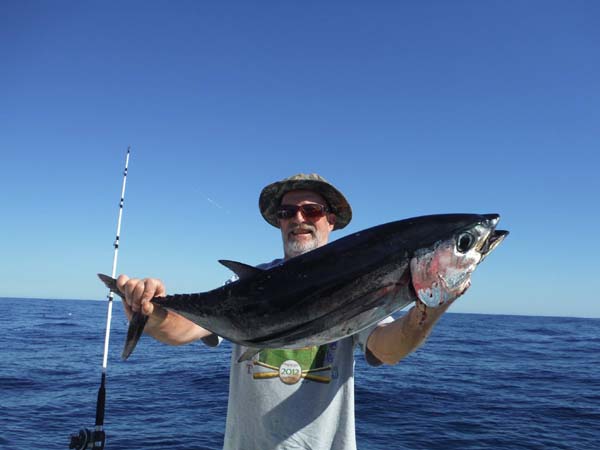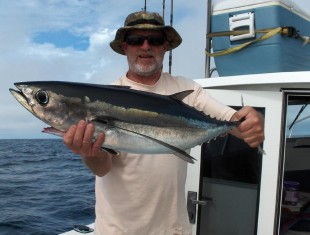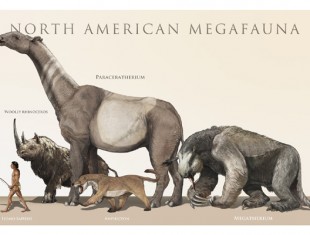EARL SANDE AND A BIG TUNA
By Earl Sande
I was recently going through one of my old history books and found some interesting information on Makah whaling during the 1800s. This book was published in 1909 and Authored by Clinton Snowden, a well known historian of that time.
The book told of a treaty that governor Isaac I. Stevens signed with the Makah Tribe living in the area of Neah Bay on January 31, 1855. These natives seldom ventured into the deep forest and raised little objection to the terms proposed to them. They were chiefly concerned about their right to take halibut, whales and other marine life as they had always been accustomed in the waters anywhere in their neighborhood.
As there was no reason to interfere with theses privileges, but rather every reason to encourage the exercise of them, the negotiations were easily concluded.
Samuel Hancock was one of the early settlers in Oregon Territory (part of what later became Washington State) and spent some time living at Neah Bay between 1849 and 1851. He left an unpublished manuscript about one of those whale hunts as he saw it:
”The canoes of the Neah Bay tribe are not as large as those used by the Indians farther north, but are able to accommodate from 15 to 20 persons. All but one of these plies the paddles. One stands at the bow of the canoe armed with a heavy spear, the point of which is made of bone, with a peculiar kind of shell attached, forming a strong, sharp barb.
“This bone point with its sharp barb is heart shaped and firmly cemented together. The handle is of considerable length, and the whole instrument weighed probably 15 or 20 pounds. To the end of the handle a very strong and pliant line, made of sinews of some animal, is attached. The lines are made with the greatest care, and have at the end an inflated buoy made from seal skin. It’s highly colored so that it may be readily seen at some distance.
“When a whale is observed in the neighborhood, the canoes are quickly made ready. Once their crews are on board, with the harpoon thrower in his place at the bow, they are driven through the water with great rapidity.
“The paddlers understand the habits of their game perfectly. They approach him near enough to strike him if they can while he is still above the water. But if this cannot be done, which is usually the case, all the canoes make off in the direction he was going when he disappeared and get as near as they can to a place where he is most likely to reappear.
“The greatest excitement prevails, for the honors of the chase, as well as the largest share of the reward, go to him who first sinks his harpoon in the whale. Yet no noise is made. The paddles are so deftly used as to cause the least possible disturbance in the water.
“When the monster reappears, all the boats rush at him, and generally one or more of the harpoons are skillfully driven into his blubbery sides. Then the real excitement of the hunt begins.
“The whale dives, taking with him the weapons of his tormentors. The lines, which have been carefully coiled in the bow of each canoe, are allowed to run out, though not more rapidly than need be.
“The inflated buoy is not thrown over until absolutely necessary to save the canoe from swamping; for as long as it can be retained it helps to keep the canoe in the neighborhood of the game its occupants are so eager to capture.
“Generally, however, it is necessary to let go, for the whale, in his great pain, dives so deep that the canoe would be drawn under if the lines were not detachable. Sometimes half a dozen or more of these buoys are floating about, and a new one is added every time the now badly wounded animal rushes to the surface.
“In time, if the battle happens to be a long one, there are so many of these as to prevent his diving to any considerable depth, and greatly impedes his progress through the water.
”More numerous and more effective throws by the harpooners now soon end the battle. The sea far around is covered with blood, and the huge monster lies on its surface, completely at the mercy of his tormentors.
“Getting their prize to the land is the most serious part of the enterprise, and I have known them to be three days and nights bringing one to the bay where I lived, nearly at the entrance of the strait.
“After getting it ashore, the entire tribe, great and small, male and female, goes to work taking off the blubber, or dipping the oil out of the head. They loaded their canoes with the fast part and then take the meat, which they eat.
“The whale bone, they attach no value to, and make no use of it that I could discover, but clean the entrails and use them to contain oil.
“They melt the blubber, and procure the oil it contains by hanging it before the fire, or cutting it in small pieces, which they put in closed baskets with hot rocks.
“They are fond of the oil as well as the meat and use it as molasses.”



